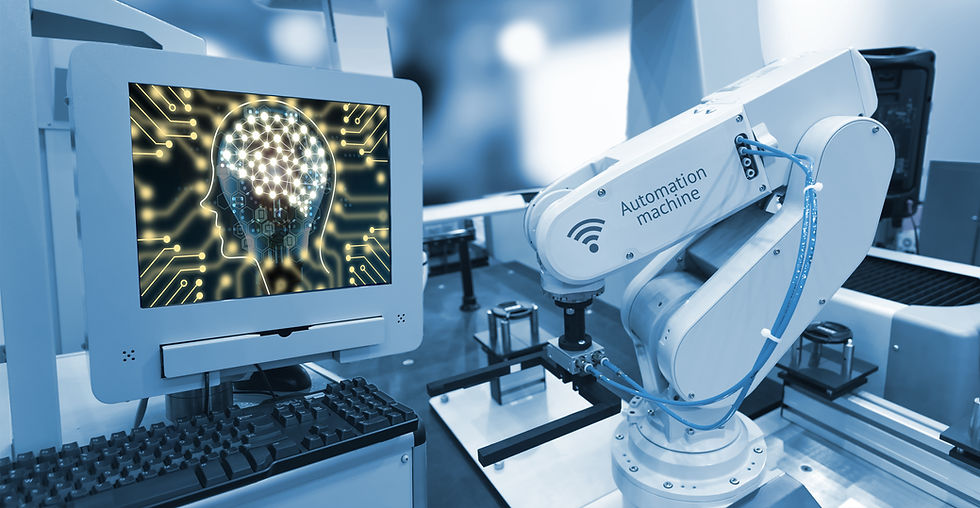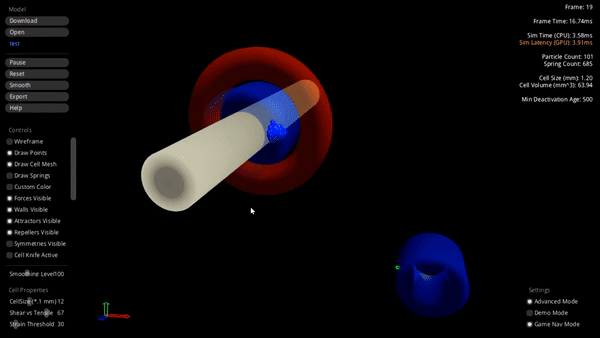AI And ML Use Cases In Industry
- Abhijeet Srivastav
- Jun 5, 2020
- 3 min read

How can manufacturers put artificial intelligence to work in the industry? In this article, you will find five possible applications of Machine learning and Deep learning to industrial processes optimization.
AI-powered Equipment Failure Prevention
Successful manufacturers prevent equipment failures before they come up. Rather than relying on routine inspections, the ML approach uses time-series data to detect failure patterns and predict future issues.
Equipment failure can be caused by various factors. Since data is collected by sensors and processed using ML algorithms, such as regression models, classification models or anomaly detection models, and sometimes external data sources, it is possible to predict what exactly causes the equipment failure.
The performance of the manufacturing process can be optimized when anomalies are revealed. The nature and frequency of anomalies can determine a failure event.
Schneider Electric leverages the Microsoft Azure machine learning platform to monitor and configure oil pump settings remotely. Anomalies in temperature and pressure flag potential issues, and when being detected, can prevent failure.
Deep Learning-powered Quality Control
The process of automated defect detection means that the machine vision-based quality control system recognizes defects like scratches, leaks, and other unwanted issues.
Deep learning approaches allow creating systems that achieve better perception than machine vision-based ones. By integrating high optical resolution cameras and GPUs with image classification, object detection, and instance segmentation algorithms, data engineers can create a precise AI inspection system to detect manufacturing defects.
Deep Learning-driven Product Design
Generative design is a deep learning-based process where all possible design options are created by a deep learning model in order to generate new products. Data science engineers consider weight, size, and material options, as well as operating and manufacturing conditions as the basis for new design solutions to be created by a model. Once generated, the most suitable design is selected and put into production.
The basis of the generative design software is GANs networks. The technology uses two networks. One network discriminates, and the other generates. While the generator network offers new product designs, the discriminator network classifies which products are real and which are generated.
General Motors, in collaboration with Autodesk, applied generative design algorithms to a seat belt bracket prototyping, which yielded in creating a product that is 40% lighter and 20% stronger than the original one.
Smart energy consumption
The energy sector can embrace AI for power consumption forecasting and optimization.
Being aimed to detect patterns and trends, ML models predict future energy consumption by processing and analyzing historical data. In this case, ML models rely on sequential data measurements, determined with the help of autoregressive models and deep neural networks. This ML approach gives a better understanding of how energy is being consumed at facilities, and optimizes manufacturing processes in a more data-driven way.
For example, a Swiss corporation ABB provided manufacturers with an AI-driven platform to prevent peak-time energy costs.
Supply chain management
ML-based supply chain management software uses deep neural networks to analyze such data as material inventory, inbound shipments and work-in-processes, as wells as market trends, consumer sentiments, and weather forecasts.
By utilizing demand forecasting methods that may include time series analysis, feature engineering, and NLP techniques, it is possible to analyze customer behavior patterns and trends. Thus, having data-driven forecasts, manufacturers can make AI-grounded decisions on logistic processes optimization.
It is also possible to optimize logistic routes by applying machine learning and deep learning algorithms. The assessment of shipments and deliverables, and determination of their impact on performance allows ML-based models to find the best solution for planning logistics routes.
Continental, a German automotive supplier, utilized an AI-based solution to predict the optimal points for tire changes on commercial fleets, which allowed to optimize the stock of tires, increase up-time, and reduce maintenance costs.
Transportation companies also utilize machine learning to optimize their performance. For example, by leveraging data from railway switches, the railway operator, predicts failures and reduces delays.
Artificial intelligence-based software solutions have been applied to many real-world manufacturing issues. Not all AI and ML technology can bring immediate success, but with innovation assets and data science engineers’ expertise, the technology can resolve numerous problems in manufacturing.







Comments